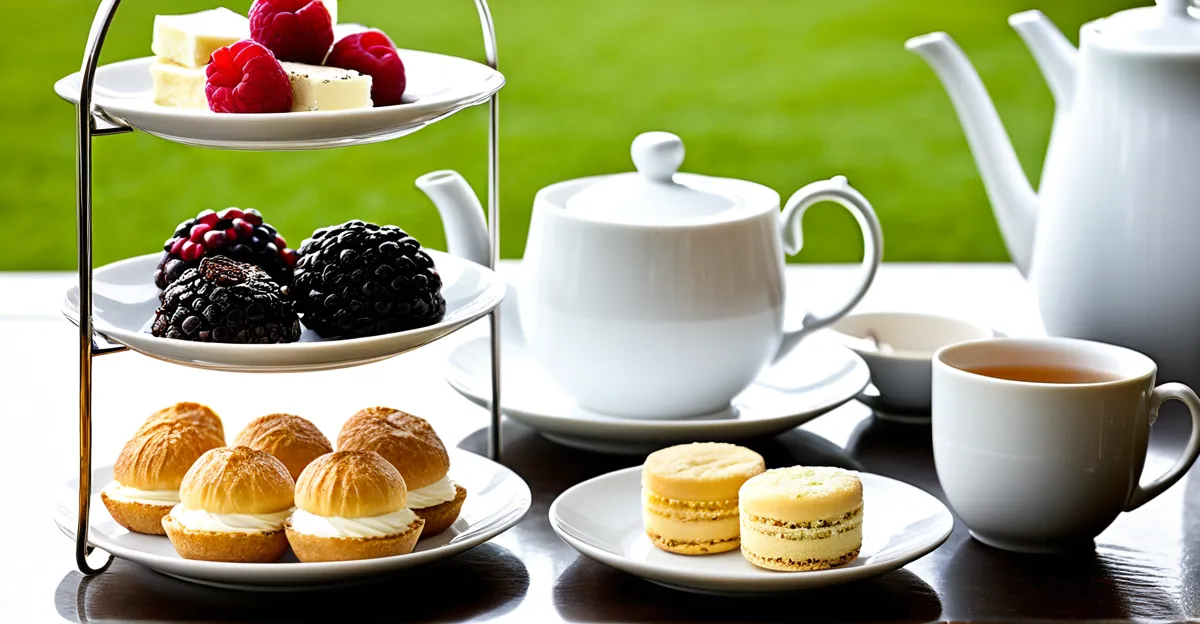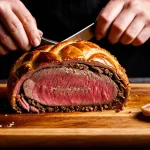Essential Foods for a Perfect Afternoon Tea Spread
A traditional afternoon tea always includes a careful selection of afternoon tea foods designed to delight the palate and create a balanced experience. Central to the spread are essential tea sandwiches, usually comprising classic fillings such as cucumber with butter, smoked salmon with cream cheese, and egg salad with watercress. These sandwiches are cut into small, crustless triangles or fingers, emphasizing both form and flavor.
No afternoon tea is complete without warm, classic scones, ideally freshly baked. They should be light and fluffy, served with rich clotted cream and fruity jam. The contrast between the tender scone and creamy topping provides a comforting and indulgent treat that is an unmistakable staple of any tea spread.
Topic to read : What are some creative ways to cook with British root vegetables?
To round off the selection, a variety of pastries for tea—think petite fruit tarts, delicate éclairs, or buttery shortbread biscuits—adds sweetness and texture. These small cakes elevate the afternoon tea, offering a delightful finish after sandwiches and scones. Together, these components create a harmonious and inviting table, perfectly executed for an authentic tea experience.
Recommended Tea Selection for Every Taste
Choosing the best teas for afternoon tea is crucial to complementing your afternoon tea foods and enhancing the overall experience. Classic black teas like Earl Grey, Darjeeling, and Assam are staples, prized for their robust flavors and aromas that balance well with both essential tea sandwiches and pastries for tea. These tea varieties provide a familiar yet refined base, satisfying most traditionalists.
Also read : How do you make a hearty beef Wellington with a flaky crust?
For guests seeking alternatives, herbal and green teas offer refreshing options. Chamomile or mint teas provide a gentle, caffeine-free choice, while green teas bring subtle grassy notes to contrast with the richness of classic scones served with clotted cream and jam. Including a range of afternoon tea drinks caters to diverse palates and dietary preferences, encouraging everyone to enjoy the spread fully.
When serving a group, quantity and brewing time matter. A loose-leaf tea brewed for 3–5 minutes typically yields the best flavor. Preparing approximately one cup (around 200ml) per guest plus extras ensures no one is left wanting. Proper brewing temperatures—near boiling for black teas, slightly cooler for green—maximize taste. This thoughtful selection and preparation elevate the tea experience, harmonizing perfectly with your chosen foods.
Presentation and Serving Ware Essentials
Creating an elegant afternoon tea presentation requires thoughtfully chosen tea serving ware and meticulous attention to the table setting for tea. A tiered cake stand is indispensable, organizing afternoon tea foods like essential tea sandwiches, classic scones, and pastries for tea in an attractive, space-efficient way. This structure highlights the variety and invites guests to explore the assortment with ease.
High-quality teapots, ideally matching the style of cups and saucers, contribute to a cohesive, refined look. Porcelain or bone china is traditional, enhancing both aesthetics and heat retention. Teapots equipped with infusers support brewing loose-leaf teas, ensuring optimal flavor extraction.
Equally important are table linens that complement the setting without overwhelming it. Crisp white or pastel-colored cloths serve as a neutral backdrop, allowing the food’s colors and textures to stand out. Decorative elements like fresh flowers or subtle candlelight enrich the ambiance without cluttering the table.
Arranging afternoon tea foods in logical progression—from savory sandwiches to sweet pastries for tea—guides guests naturally through the tasting experience. This thoughtful presentation amplifies the pleasure of the traditional afternoon tea and underlines the host’s attention to detail.
Etiquette and Hosting Guidance
Mastering tea party etiquette enhances the enjoyment of any traditional afternoon tea. One key rule is the pouring order: always pour tea for guests before serving yourself, showing attentiveness and respect. Placing napkins on laps immediately after sitting maintains tidiness and prepares guests for the meal. When handling cups, avoid raising the pinky finger, as proper manners favor a natural grip. Serving sequence typically begins with essential tea sandwiches, followed by classic scones with clotted cream and jam, finishing with pastries for tea; this progression honors the traditional palate journey.
Effective hosting afternoon tea involves careful timing. Aim to start about mid-afternoon, allowing about 1.5 to 2 hours for a relaxed experience. Prepare all afternoon tea foods in advance to focus on guest interaction. Ensure seating arrangements encourage conversation, and provide comfortable chairs at a suitably set table. Ambient music and gentle lighting add warmth without distraction.
For special occasions, adapt the event by incorporating themed decorations or personalized touches like monogrammed napkins. Consider dietary needs by offering alternative afternoon tea drinks and ingredient substitutions. These afternoon tea tips help hosts create an inclusive, welcoming atmosphere that respects tradition while celebrating the moment.





